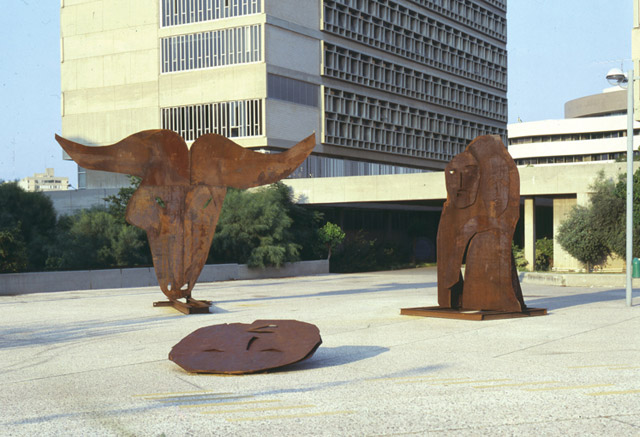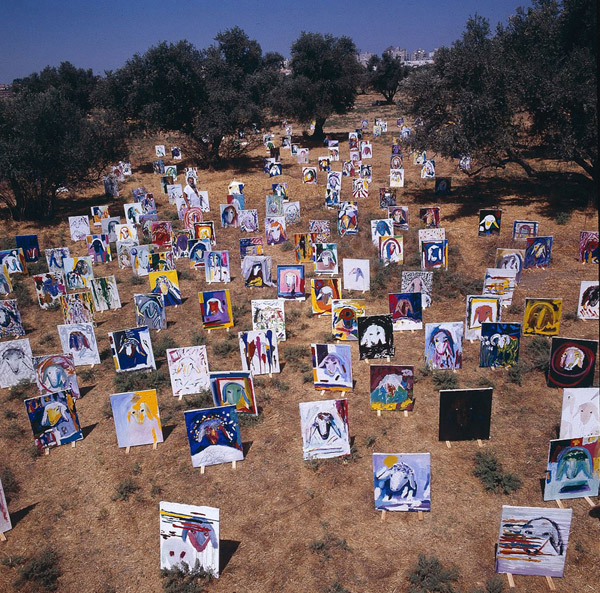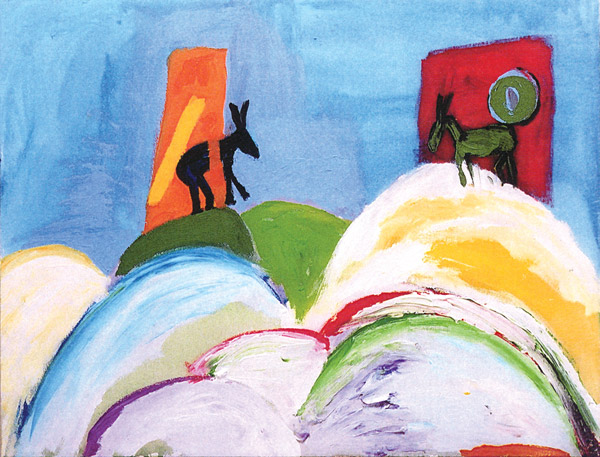Israeli sculptor and painter Menashe Kadishman passed away this month at the age of 82. His works have been displayed at museums, galleries and international art fairs around the world. Some of his best-known metal sculptures can be seen in central locations in Israel, such as the Tel Aviv Museum of Art and Habima Square in Tel Aviv. He was awarded the Israel Prize for Sculpture in 1995.
After studying with Israeli sculptor Moshe Sternschuss in Tel Aviv and with Rudi Lehmann in Jerusalem, Kadishman moved to London in 1959, where he attended the Central Saint Martins College of Art and Design and the Slade School of Art. His sculptures of the 1960s were minimalist in style, designed using glass and metal as to appear to defy gravity. Kadishman remained in London until 1972 where he witnessed the development of pop-art, and then returned to Israel.
Kadishman's later, neo-expressionist period began in the early I980s with the monumental metal sculptures of the sacrifice of Isaac and of women in labor. When the Lebanon War broke out in October 1982 and his son was drafted, Kadishman began to depict the horrors of war and the sacrifice of Isaac, in both painting and sculpture. While the birth sculptures reflect the pain of the women bearing sons who are sent off to die in wars, Kadishman identified himself with Abraham - sacrificing his son on the altar of his country.
 Copyright: Menashe Kadishman (with permission of the family)
Copyright: Menashe Kadishman (with permission of the family)Whereas all earlier works in the history of art depict the biblical sacrifice with the intervention of the angel of God, in Kadishman's interpretation, it is not the ram that is sacrificed but Isaac, who stands for all lsraelis who have fallen in battle, and for victims of conflict throughout the world. In the sculpture which still stands today in front of the Tel Aviv Museum, the head of Isaac is lying on the ground near the upright head of the ram, with two grieving women standing in the background.
 Copyright: Menashe Kadishman (with permission of the family)
Copyright: Menashe Kadishman (with permission of the family)The sheep became for Kadishman another symbol of human sacrifice. In his youth, he worked as a shepherd on Kibbutz Ma'ayan Baruch - an experience which had a significant impact on his later artistic work. The first major appearance of sheep in his work was in the 1978 Venice Biennale, where Kadishman presented a flock of colored live sheep as living art. In 1995, he began painting hundreds of portraits of sheep, which became his artistic trademark.
 Copyright: Menashe Kadishman (with permission of the family)
Copyright: Menashe Kadishman (with permission of the family)The figure of the donkey emerged as a central feature in Kadishman's most recent work. As the common Middle Eastern beast of burden, it expresses the agricultural society in which he grew up. But the donkey is also the animal that Abraham left behind at the foot of the mountain as he climbed with Isaac to the sacrifice. Finally, according to Jewish tradition the Messiah will arrive at the gates of Jerusalem on the back of a white donkey, signifying the end of bloodshed and sacrifice.
 Copyright: Menashe Kadishman (with permission of the family)
Copyright: Menashe Kadishman (with permission of the family)